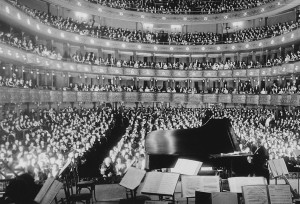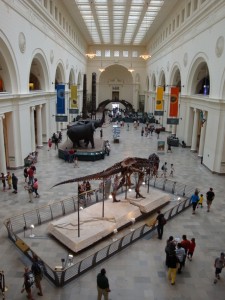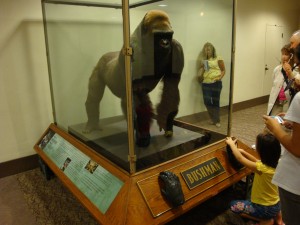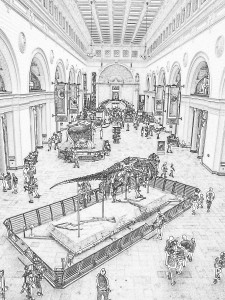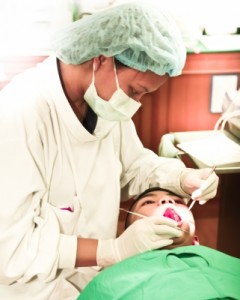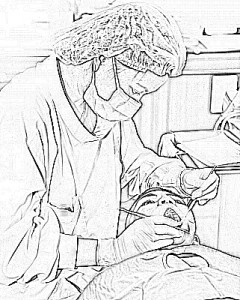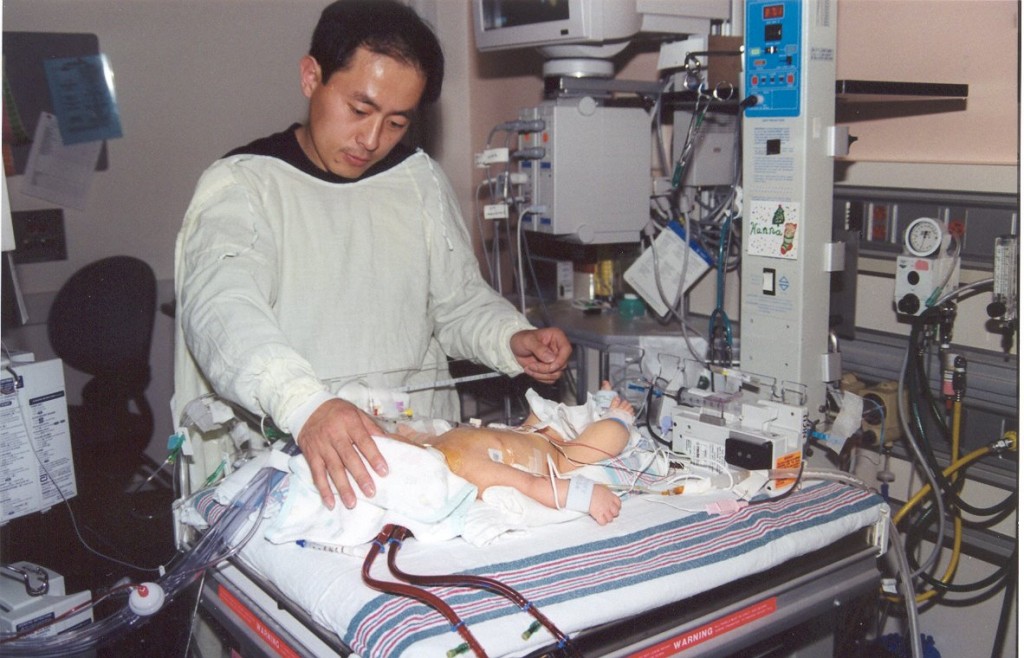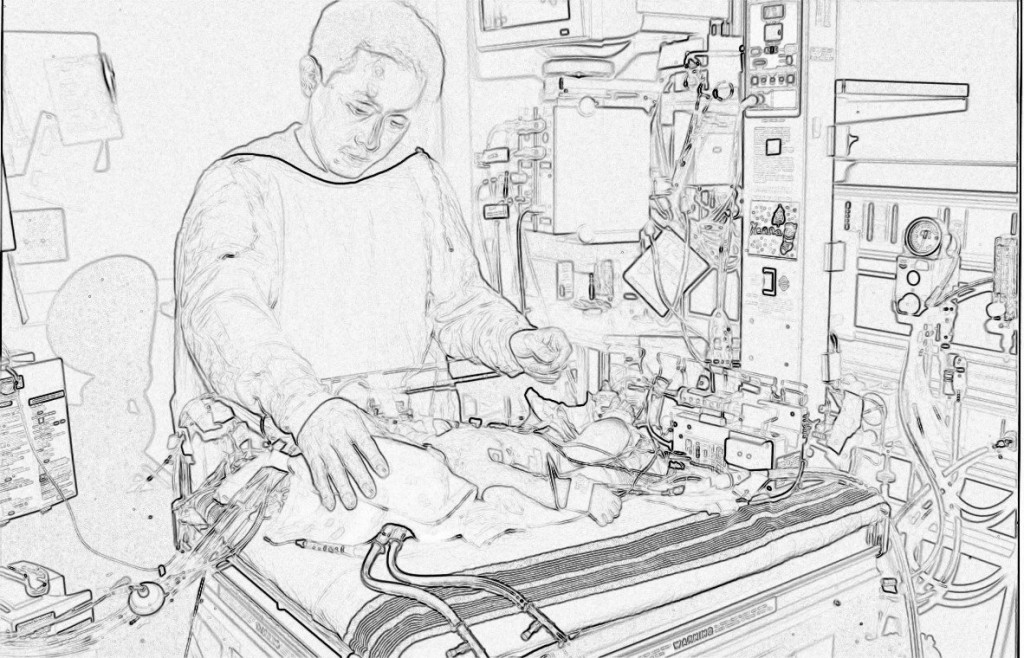1. Where is this picture taken?
This picture is taken in a concert hall, or a large auditorium designed for musical performances.
2. What do you see on stage?
On stage there is a piano (a concert grand piano), a man sitting at the piano, several chairs, and a number of music stands.
3. What do you call the man who gives instruction to the musicians?
The man who gives instructions to the musicians is called a conductor, or a director.
4. Whom do you see on stage?
On the stage we see a man sitting at the piano (a pianist).
5. What is he doing?
The man is playing the piano.
6. Who is listening to the pianist?
The audience (the concertgoers) are listening to the pianist.
7. Where are the people listening to the pianist sitting?
They are sitting in seats on the main floor, as well as in the gallery (balcony) and box seats.
8. How many balcony levels are there?
There are four levels of balconies.
9. How are the people dressed?
The people are dressed formally.
10. Who helps the people find their seats?
An usher helps the people find their seats.
11. What kinds of music can you hear at a concert?
At a concert you can hear all types of music: classical music, jazz, rock music, popular music, folk music, etc.
12. How can the people know what music is being played?
The people can know what music is being played by reading the concert program.
13. What is a break during a concert called?
A break during a concert is called an intermission.
14. Why is there usually a break in the middle of the program?
There is usually a break in the middle of the program so the musicians can get a rest, and the audience can get up and stretch their legs, use the restroom, etc.
15. What does the musician play as a special request after the end of the listed program?
After the end of the listed program, the musician will often play a special request, called an encore.
16. What does the audience do to show they like the performance?
The audience claps their hands (applauds) to show they like the performance. Applause helps the musician to know his performance is appreciated.
17. What sign might you see in the lobby if there are no more tickets available?
If there are no more tickets available, you might see a “SOLD OUT” sign in the lobby.
18. What do you call a musician’s first performance?
A musician’s first performance is called a debut.
19. Where are the good seats usually located?
The good seats are usually located in private booths (box seats) in the balcony, or in the front rows near the stage.
20. Where are the cheap seats usually located?
The cheap seats are usually located in the uppermost balcony, or in the very back of the auditorium.
Paragraph: At a Concert
When I was in college, I took piano lessons for a couple of years. My piano teacher also happened to play violin in the civic orchestra in the city where my university was located. One time she had some extra complimentary tickets for one of the orchestra’s upcoming concerts, so when she asked me if I would be interested in going, I said yes, and gratefully accepted the free ticket.
The concert hall in which the orchestra performed was located in the downtown, in an old but stately auditorium. I got there shortly before the concert was supposed to begin and located my seat. Shortly after this, the members of the orchestra began coming in, one by one, and taking their place. I looked for my music teacher, and saw her seated among the other violinists. Then the musicians readied themselves and the first clarinetist played a note, by which all the other members tuned their respective instruments. When everyone was properly tuned, then the conductor came on stage and ascended the podium. He brought the orchestra to attention by rapping his baton on his music stand, and the concert began. The repertoire of the orchestra had classical music, which I enjoyed, and it seemed like every musical piece that they played evoked some vivid scene in my mind. Before I knew it, the concert was over, bringing to a close an enjoyable Friday evening. It was time to go home.

